Once, when you were very young, you had difficulty writing. You practiced on lined paper until you could write easily, legibly, and quickly. Henna patterns can be created of simple elements just as words are created of letters. If you learn the elements, you can put them together to make complex patterns. Practice these exercises with lined paper and a pen until you can draw the figures quickly and smoothly, just as you practiced elementary school penmanship exercises. Then practice them with a henna cone. In time, you'll be able to build up complex henna patterns quickly and easily. Bookmark this page and come back often for more free patterns from The Henna Page!
Click on the images below for more pictures and free patterns!
The "Bridal Henna" Series
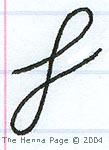
1: The Fooffy:
This looptyloop is similar to the cursive letter "f." Click on the Fooffy to see what you can do with it!

2: The Hump:
This hump is the most frequently used element in contemporary Indian bridal henna. Learn to love your Hump, and practice humping for speed and accuracy! Click on the Hump to learn more about humping!

3: The WibbleLeaf
This leaf is created with a wibble and a flick. Henna that is naturally stringy or which has had dextrose added makes these WibbleLeaves go smooth and fast. Wibble up, Wibble down, Wibble around a spiral! Click on the WibbleLeaf to learn wibbling!

4: The ZiggyZoggy
The ZiggyZoggy is most easily done with naturally stringy henna, or henna with added dextrose. If you have stringy paste, you only need to touch down at the apex and nadir of each angle and drape between. North African patterns use lots of ZiggyZoggies! In India, repeating ZiggyZoggies symbolize the rainy season, water, fertility, and abundance. Learn your ZiggyZoggy! Click on the ZiggyZoggy to learn how!

5: The Fishbone
The Fishbone is most easily done with naturally stringy henna, or henna with added dextrose, so you can drape fine and straight fishbones . Fishbones are great "filler" patterns between longer lines. Click on the Fishbone to learn how!

6: The Mummy
The Mummy, the letter M, is versatile and beautiful! Have fun with your Mummy! Click on the Mummy to learn how!

7: The Sprout
The Sprout looks like a sprouting seed or a comma with a long tail. Sprouts are a tasty addition to henna patterns! Click on the Sprout to learn how!

8) The Game
The Game is a depiction of a game board, symbol of merriment, leisure time, and games of strategy and chance. This pattern has been a favorite in Indian henna for over 100 years, and continues to be popular in contemporary bridal henna. Click on the Game to learn how!

9) The ?S?S?
This pattern is variously interpreted as a vine, meander, pot hook, or a scorpion. As a scorpion, it may have either passionate or deadly associations ... or both! Click on the ?S?S?S to get passionate and deadly ... or to just hang your cooking pot over the fire!

10) The Bud
This tiny leaf or flower bud appears in henna designs all over the world as a metaphor for youth, fertility and new life. Click on The Bud to learn to grow your own!

11) The Cursive S
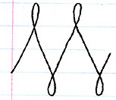
12) Sloopy
Sloopy is Foofy's cousin, from the bad part of town. Click here or on the Sloopy to hang on ...
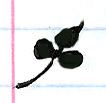
13) Tribbles
The tribble is a cute little pattern. Click here or on the tribble to begin the proliferation!

14) Ripples
This pattern represents life-giving, purifying running water. Click here or on the ripple to dive in!
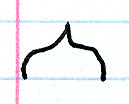
15) The Kiss
This pattern is useful for flower petals, honeycomb fills, and other sweet things. Click here or on the Kiss for a sweet treat!

16) The Knot
This pattern makes lovely leaves from simple scribbles. Click here or on the Knot to get tied up!

17) The Open Heart
When you spin open hearts around in a circle, you have lovely flowers. Click here or on the Open Heart to make the flowers bloom!
 18) Kitty Whiskers.
18) Kitty Whiskers.Got Tuna? Click here or on the whiskers to see whisker wonderfulness!

19) Pug Tails
Got cookies? Click here or on the Pug Tail to get Pug Love!

20) The Seed
It's a good seed! Click here or on the seed above to plant your garden
The "North African" SeriesIntroduction to "North African" style henna
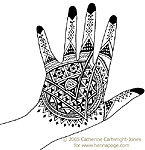
Triangles: Tanith, The Bride, and the Eye
Eight-Pointed Stars: Venus




No comments:
Post a Comment